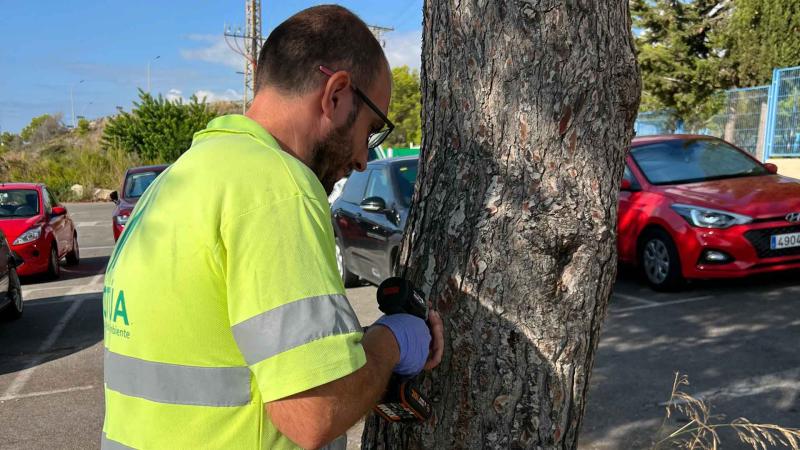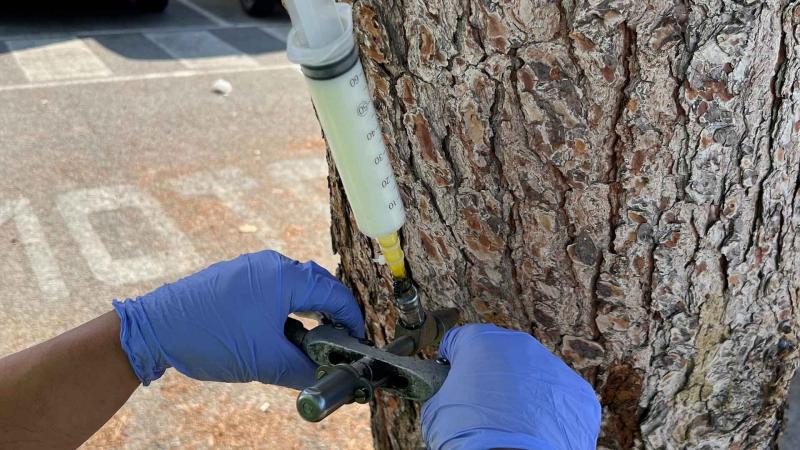The action consists of injecting authorized phytosanitary products into the tree, which kill the caterpillar and prevent defoliation of the specimens
Benidorm is working on 4,000 pine trees in the municipality to prevent the spread of the processionary caterpillar plague next year

Benidorm City Council's Department of Parks and Gardens has initiated action to prevent the spread of the pine processionary caterpillar over the coming months. The intervention will target approximately 4,000 pine trees throughout the municipality, with special attention to those near schools and public parks.
The action, which has already begun by the city's Parks and Gardens concessionaire, will last for two months. "It consists of the use of phytosanitary products authorised by the Regional Ministry, which are injected directly into the tree to prevent contamination by this pest," explained the councillor for the department, José Ramón González de Zárate. The product in question kills the pine processionary caterpillar, preventing it from feeding on the leaves, which often results in the weakening or death of the pine tree.
The workers carrying out this action have completed a valid Phytosanitary Product Handler course, and their scope of action focuses on "pine trees in schools, garden areas in the city, the urban park of El Moralet, the park of L'Aigüera, and, in general, all areas of Benidorm where there are pine trees that could be affected by this pest," stated González de Zárate, who also mentioned areas of action such as the Sèquia Mare park and the area next to the AP-7 highway where a fire broke out last year to remove affected trees. Work will also be carried out in areas affected by the "tomicus" (pine processionary moth).
Even though this action is being carried out, the councillor emphasised that "there has not been a significant increase in the presence of the processionary moth in Benidorm's pine trees in recent years, and when a source of infection is detected, we act immediately." He also stated that "special attention is being paid to pine trees in or near schools" as well as in urban parks "to prevent the outbreak of the pest."
The pine processionary caterpillar damages trees and seriously affects the health of people and animals through its stinging hairs, which can cause severe allergic reactions. After hatching, the caterpillars defoliate trees, weakening them, and then form long lines or "processions" to descend and bury themselves in the ground for metamorphosis. The hairs they shed are very fine and stick to the skin or mucous membranes, releasing a toxin that causes itching, redness, severe inflammation of the tongue in pets, and even respiratory problems in humans.

